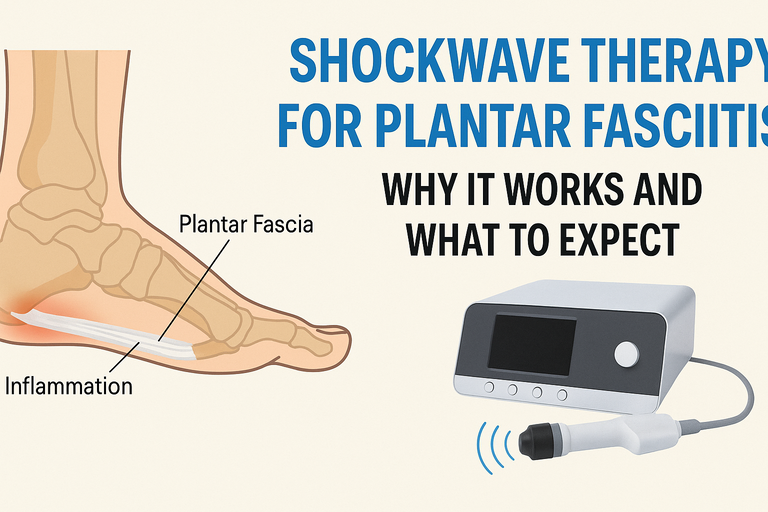Shockwave Therapy for Plantar Fasciitis: Why It Works and What to Expect
Plantar fasciitis is one of the most common causes of heel pain, affecting runners, athletes, and even people who spend long hours on their feet. The stabbing pain in the bottom of the foot — especially in the morning — can severely impact daily life. While conventional treatments like rest, ice, stretching, and orthotics help some people, others are left searching for faster and more effective solutions.
This is where shockwave therapy steps in — especially when applied using an advanced shockwave therapy device for pain relief like the Thork Shock Wave.
What Is Plantar Fasciitis?
Plantar fasciitis occurs when the plantar fascia — the thick band of tissue connecting the heel bone to the toes — becomes inflamed due to overuse or excessive strain. The condition often results from:
- Long-distance running or walking
- Poor footwear
- High-impact activities
- Flat feet or high arches
- Obesity
Left untreated, it can develop into a chronic condition that affects mobility, posture, and overall quality of life.
How Does Shockwave Therapy Help?
Shockwave therapy is a non-invasive treatment that uses high-energy acoustic waves to stimulate healing in damaged tissues. When applied to the heel and surrounding area, it:
- Reduces inflammation and pain
- Breaks up scar tissue or calcifications
- Stimulates blood flow and cell regeneration
- Accelerates natural healing processes
Unlike corticosteroid injections or surgery, shockwave therapy involves no incisions, no anesthesia, and minimal downtime.
Why It Works So Well for Plantar Fasciitis
Numerous clinical studies have shown the effectiveness of shockwave therapy for plantar fasciitis. It works on both acute and chronic cases by targeting the root cause: inflammation and tissue damage in the plantar fascia.
Patients typically experience:
- Reduced pain after just a few sessions
- Improved mobility within weeks
- Long-term healing with no need for invasive procedures
The key to successful outcomes lies in using the right equipment — like the Thork Shock Wave, which allows for precise control over intensity, frequency, and depth to match each patient’s condition.
What to Expect During Treatment
A typical shockwave therapy session for plantar fasciitis lasts around 10 to 15 minutes. Here’s how it works:
- The clinician applies a conductive gel to the heel area.
- The Thork Shock Wave device emits targeted acoustic waves.
- The patient may feel a pulsing or tapping sensation — not painful, but noticeable.
- The area may feel slightly sore afterward, similar to post-workout fatigue.
Most patients require 3 to 6 sessions, spaced about one week apart.
Is It Right for Your Clinic or Practice?
If you’re a physical therapist, chiropractor, podiatrist, or orthopedic specialist, offering shockwave therapy for plantar fasciitis can significantly expand your services and improve patient outcomes. With high patient satisfaction and short treatment cycles, it’s a win-win for both provider and patient.
By investing in an advanced shockwave therapy device for pain relief, you not only address one of the most widespread musculoskeletal conditions — you also position your clinic at the forefront of non-invasive pain treatment.
➡ Want to learn more about how shockwave therapy works across multiple conditions — from sports injuries to aesthetics? Read our full guide:
Thork Shock Wave: The Shockwave Therapy Device Transforming Pain Treatment and Physical Recovery
Ready to Offer Shockwave Therapy?
Plantar fasciitis doesn’t have to limit your patients’ lives — and you don’t need complex or costly procedures to treat it. Shockwave therapy offers a fast, reliable, and science-backed solution.
Discover the device professionals trust:
Order the Thork Shock Wave here
And explore our full category of shockwave therapy equipment designed to elevate your clinical outcomes.




